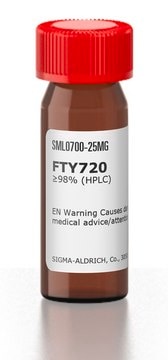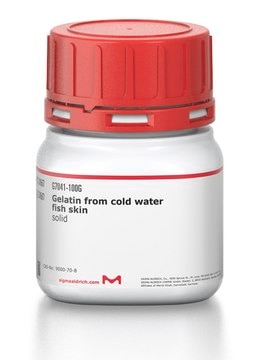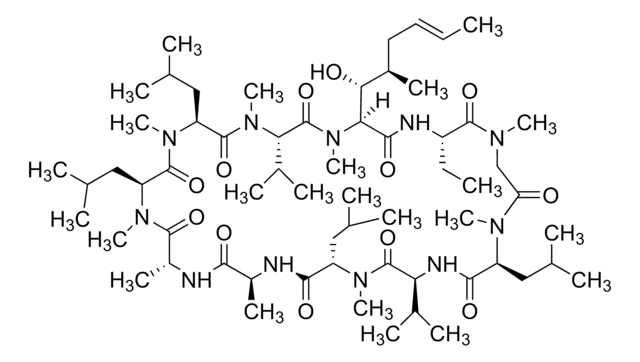S3944
SEW2871
≥98% (HPLC), solid
Synonym(s):
5-[4-Phenyl-5-(trifluoromethyl)-2-thienyl]-3-[3-(trifluoromethyl)phenyl]- 1,2,4-oxadiazole
About This Item
Recommended Products
Quality Level
assay
≥98% (HPLC)
form
solid
storage condition
protect from light
color
white
mp
94.5-95.3 °C
solubility
DMSO: ≥10 mg/mL
H2O: insoluble
storage temp.
2-8°C
SMILES string
FC(F)(F)c1cccc(c1)-c2noc(n2)-c3cc(-c4ccccc4)c(s3)C(F)(F)F
InChI
1S/C20H10F6N2OS/c21-19(22,23)13-8-4-7-12(9-13)17-27-18(29-28-17)15-10-14(11-5-2-1-3-6-11)16(30-15)20(24,25)26/h1-10H
InChI key
OYMNPJXKQVTQTR-UHFFFAOYSA-N
Gene Information
human ... S1PR1(1901) , S1PR2(9294) , S1PR3(1903) , S1PR4(8698) , S1PR5(53637)
Related Categories
Application
Biochem/physiol Actions
Features and Benefits
Packaging
wgk_germany
WGK 3
ppe
Eyeshields, Faceshields, Gloves, type P2 (EN 143) respirator cartridges
Certificates of Analysis (COA)
Search for Certificates of Analysis (COA) by entering the products Lot/Batch Number. Lot and Batch Numbers can be found on a product’s label following the words ‘Lot’ or ‘Batch’.
Already Own This Product?
Find documentation for the products that you have recently purchased in the Document Library.
Customers Also Viewed
Our team of scientists has experience in all areas of research including Life Science, Material Science, Chemical Synthesis, Chromatography, Analytical and many others.
Contact Technical Service




